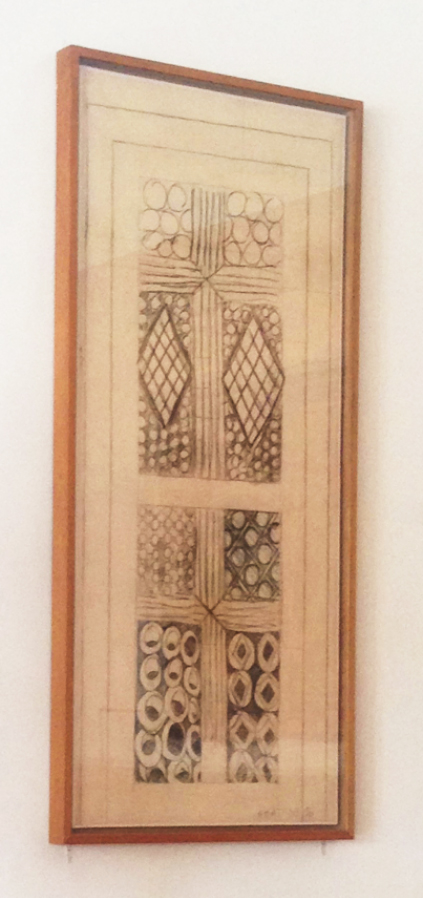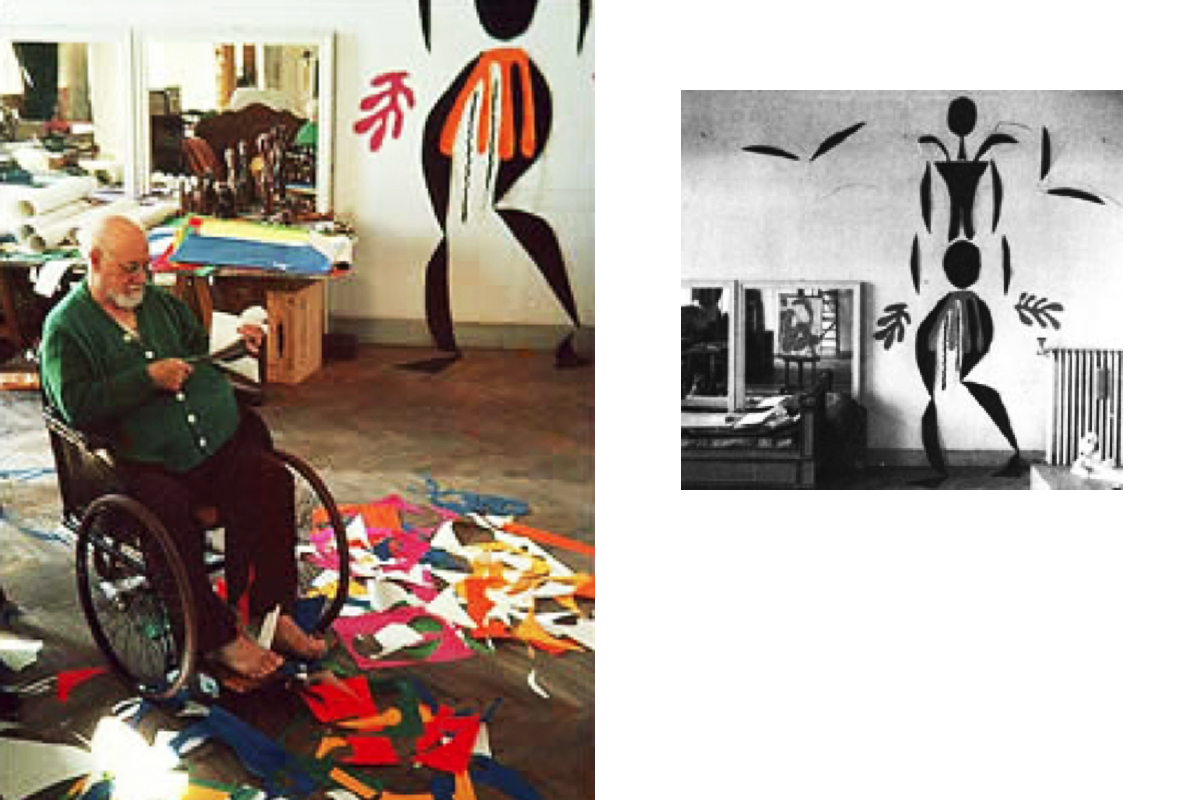While my daughter and I were visiting the Matisse Museum in Nice, sitting in a large room with his stenciled florals to our right and his appliqué textiles from North African and East Indian to our left, I had an epiphany. These indigenous textile hangings were Matisse’s inspiration for his cutouts.
These hangings he collected from afar were initially used as backdrops and model's clothing in his paintings. They also decorated his studio and home. Looking at these floral appliqués' negative and positive spaces, it became obvious that this fabric some with cut outs for transparency was right where Matisse got his inspiration for his cut outs that then became his obsession for the last 14 years of his life.
My training, first as a fine artist and then a fiber artist cutting my stencils while living in Japan, setting up a silkscreen studio and painting on hand made paper to use for collages, I understood this visual progression and was awed by his transformation of it.
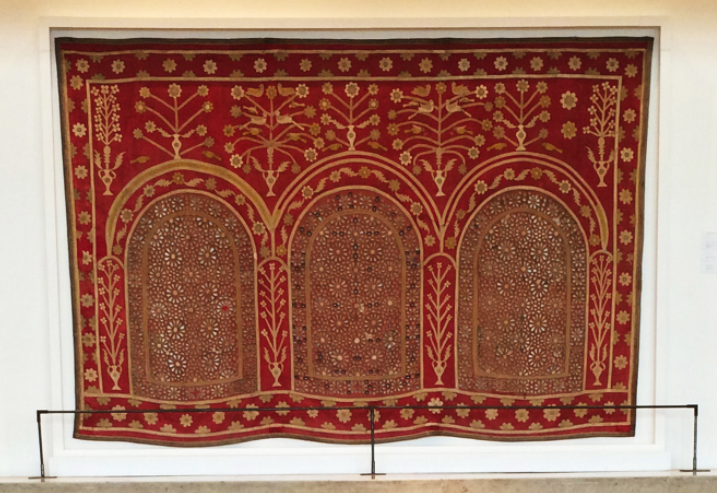
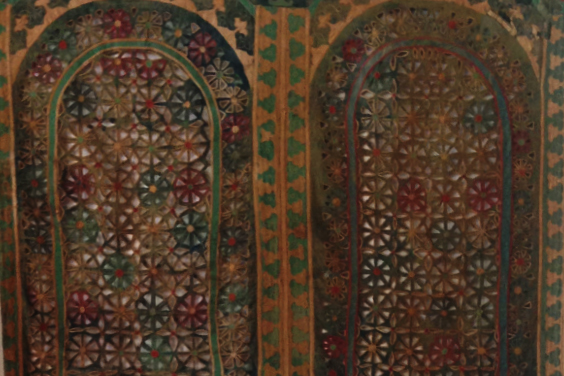
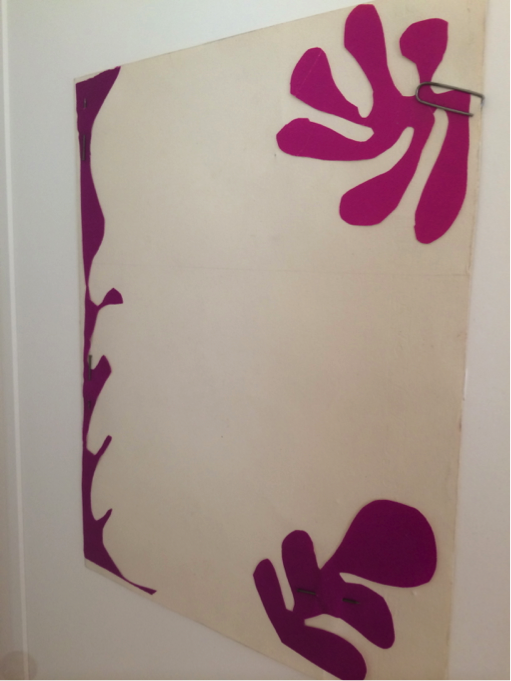


In his earlier years Matisse travelled twice to Morocco with was then a French colony. For years he surrounded himself with his “props”, pieces of textiles and open wooden latticework from exotic places, adorning his abode as well as the models he would put into his canvases. It makes sense that he would devote his last years to these negative/positive concepts of expression that the cut outs offer.
I was sure the explanation, in French, on the far wall would not only explain but reinforce what I had just discovered. Instead it talked of Matisse's love of using these exotic textiles in his paintings and their special purpose as wall hangings to divide his space, bringing in light and breaking up planes. No mention was even hinted at of this special correlation to his later, and some say his most significant and definitely most beloved work.
Did they not see this obvious link? Was it my years of experience immersed in the world of art, design and textiles that gave me this clue to what informed him?
Another significant progression to the cutouts that I came to appreciate a few months later during a visit to the recent block buster show at MoMA was that, aside from the innate beauty of each piece, Matisse made a jump from the cutouts being a “means” to being an “end”. Using the cutouts as a “means” he executed the Barnes collection murals and then quickly hit his stride. For more about my visit to these Barnes murals in Philadelphia and the MoMA exhibit please visit our first ABODE chapter: Matisse section
These Barnes Mural cutouts became the launch for Matisse making it a stand alone art expression. As painting and sculpture are stand alone arts, Matisse was the force who moved cutouts into their own.
Matisse in his own words said, "Only what I created after the illness constitutes my real self: free, liberated.” Matisse described this process as "drawing with scissors" explaining: "Paper cutouts allow me to draw in color. I see it as a simplification. Instead of drawing the contour and putting color into it--one modifying the other--I draw directly in color."
It was the culmination of what Matisse described as "an entire life of work."
Now on the prowl to support my newfound theory, at the MET I found 2 descriptions of Matisse's early paintings referring to the importance of his appliqués, stating, in his own words: fabrics "play a role equivalent to the female nude."
We can see how he placed his exotic appliqué textiles - front and center on the model - in this painting at the MET.
The description of the painting reinforces the early importance of these textiles saying that photographs taken of Matisse’s studio during the mid-1920’s show North African textiles draped over furniture, hanging on the walls, and rigged into makeshift theatrical sets that served as backdrops for his odalisque-costumed models.
1924 - A description of his work at the MET states Matisse’s Nice-period works feature elements that reappear: boldly patterned wallpaper, elaborately pierced and appliquéd textiles of North African origin.
In the last room of MoMA’s present cut-outs exhibit (2014-2015) in NYC, the finalé work on view, has a mention of the Middle Eastern influence on his work, “it's ornamentally repeating forms resemble repeating mosaics and tiles, demonstrating the impact of Near Eastern art on Matisse's practice.”😊
He’d come full circle in 1953 - a year before his death. Whether he used the stencil technique as a book design or to cut out paper as a maquette for ceramics, he cross pollinates his ideas and thus widens their platform of visibility. Matisse was playful. He continually stretched the boundaries while taking his vision to new heights - and taking us along for the joy of it.
~Jo


